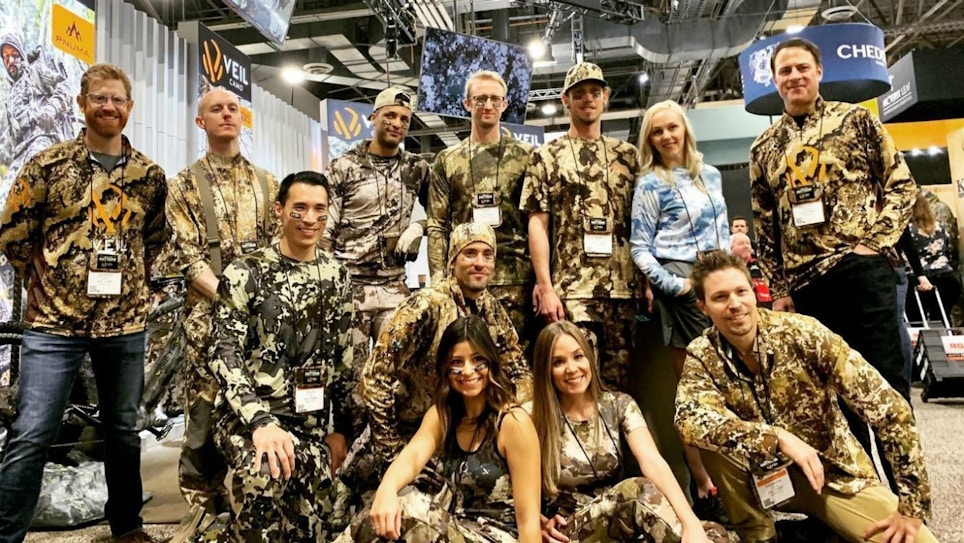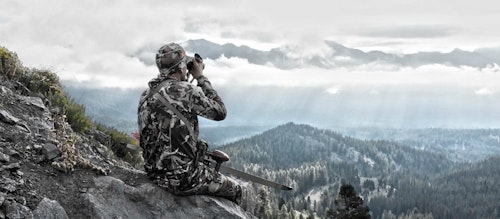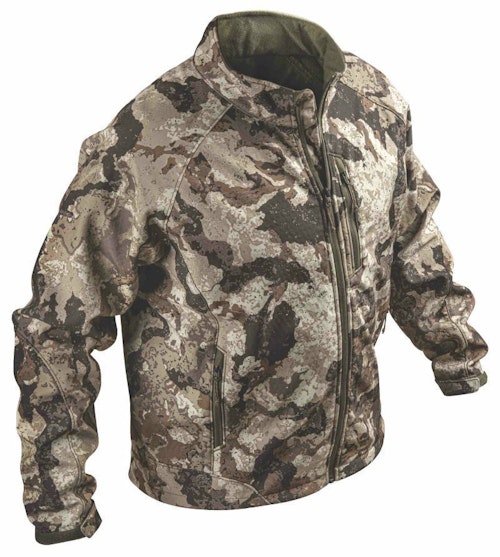Any day in a treestand is full of possibilities. When you climb up, there’s always the thought, “today could be the day.” The reality of hunting is there are far more days of staring at an empty stage on which the main character never makes an entrance. But as every deer hunter also knows, the real success of a day in the stand doesn’t depend on seeing the buck of a lifetime. The time spent alone in a tree can be productive in many other ways.
Joseph Skinner, the founder and designer at Veil Camo, knows that as well, perhaps better than any other. It was a slow day in the stand when a completely new way to design camouflage came to him.
Quick History
Skinner said, “I was whitetail hunting in the Hudson Valley of New York in the fall of 2010. The hunt itself wasn’t particularly exciting or interesting in any way. In fact, I was sitting in that treestand, seeing zero activity all day. I spent the time observing my surroundings and my mind started to drift. Then I had a sudden moment in which I could start to see the patterns in the natural world around me. This totally inspired me to figure out how this could be applied to camouflage design.”
From that slow day in the stand, time sped forward, and in less than 10 years, Veil Camo was begun and quickly became a success. Highlights include:
- October, 2010 – The “aha” moment in the treestand.
- November 2010-2012 – Heavy research and testing; Veil Camo officially formed.
- 2013-2016 – Patterns developed for First Lite and Leupold; more patterns developed for different applications and animal species.
- 2016 – Veil Camo, LLC formed with new partners.
- 2016 – Present – Fast growth with an increasing family of partners throughout the outdoor wear industry, including Walls, Prois, 5.11 and more.
The Veil Camo Difference
The skeptical hunter or retailer looks at camouflage clothes hanging on the rack and wonders, “What’s best?” and “Does it really make a difference?”
Skinner is quick to make it clear that there’s a big difference in the patterns Veil Camo designs. He says, “We use a four-pillar design approach that incorporates camouflage theory, mathematics, animal research and color. We aren’t mimicking nature. We are using research and its application to fool the brain of the target species and give discerning consumers an advantage.
“Every pattern we create is purpose-built with the end-use and target species informing all of our design choices. We aren’t recycling tired ideas seen for 20-plus years in the camo industry. We’re building new and more innovative approaches to concealment. We are constantly pushing, refining, improving and looking for ways to push the state of the art.”
Their Own Lingo
In checking the www.veilcamo.com website, one quickly recognizes this isn’t Grandpa’s camo designer. It’s there to be seen in the patterns for hunting, fishing and tactical wear. It’s also there in the descriptions of Veil’s patterns such as GEO7, Cervidae, HID3, Cumbre, Alpine, Avayde and more. Hunters and retailers may come face to face with terms they’ve not encountered before:
- Macro disruption – The ability to break up big shapes. This characteristic aids in ability to hide the human form.
- Textural disruption – The break up that blends a pattern into the surroundings.
- Scalable disruption – The characteristic allowing the different breakups to work together at any distance.
- Disruptive mimetic coloration – Similar to textural disruption, this concept uses a combination of color and small shape based solely on the intended environment for the pattern.
- Modification by mathematical algorithms – Nature looks the way it does because of specific reasons. They are accounted for by the mathematics of fractals (self-repeating patterns) and chaos (all the outside forces in nature that cause all irregularity). Veil consciously incorporates these theories into its patterns.
- Cell-like distortions – Literally, shapes that look like cells that break up the pattern design.
- Visual biases – Common natural shapes and patterns found in an environment.
- Controlled color – Veil Camo analyzes the color of a target environment in a range of situations and weather conditions, then creates and utilizes a specific palette for the pattern.
Camo for Specific Purposes
The evolution of camouflage design began as one pattern for all uses and species. Since then, modest steps have been made in creating patterns for a scope of generic environments. Today, we have patterns for woods, marsh and prairies. Veil is driving the next phase of the evolution by designing patterns geared to specific environments and species.
Skinner noted, “Every species has a specific way it sees and perceives the world around them. This is because of their eyes, head shape and more. This, along with their environment, influences what type of concealment will be effective.
“Range also has a big effect on concealment. Bowhunting will be considerably closer than rifle hunting. The eyesight of animals plays a big part in how we account for range as well. Environment also has a crucial part to play. We design shapes and patterning based on environmental bias. We can’t go putting a treestand pattern out in the plains. It’s just not going to function as well as it does in its intended environment.”
Veil’s GEO7 pattern applies these concepts to human vision, as well, to achieve optimal performance for tactical wear. Skinner explained, “The biggest differences come directly from how different species see color, perceive shape, see binocularly vs. monocularly, etc. Humans perceive shape really well, have some of the best eyesight with a lot of binocular vision, and also react to movement. Contrast this with any of the hunted species and you see some huge differences.
“GEO7 is special for several reasons. It’s visually unique, and because of the cell-based disruption, it works really well in a lot of places. Thanks to what we as humans can see and how we see, the color palette, the break-up concepts, and how it works in the environment are very different from how our hunting patterns work.”
Veil’s GEO7 and GEO7 NIGHT patterns are available on 5.11 tactical gear.
A Different Way
The camouflage design industry is sometimes accused of being based more on marketing than research, but Veil Camo has set out to change that notion. Skinner said, “It’s true that you can get away with wearing all kinds of things. This is no secret, but this accusation against the camo industry is the reason I decided to start doing this.
“So much of what the big camo companies actually do is more marketing than innovation. This lack of innovation and over saturation of the same old stagnant camo fueled my drive to make it all better. Powerful concealment makes a powerful difference; 100-plus years of research in camo and biology (both wildlife and human) backs that up. Our patterns are for the brands and consumers that rely on their gear to give them advantages.
“While the marketing element is important, we don’t position ourselves as a marketing company. We are a design company that brings better, more innovative concealment to brands with a totally different approach to the business model.”
For more information, visit www.veilcamo.com.









